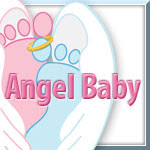NICE GUIDANCE ON SEEING AND HOLDING A STILLBORN BABY
The practice of offering parents opportunities to create memories and, in particular, to see and hold their babies after death, arose out of the anguish of those who had not been allowed to do so. In response, Sands has worked with health professionals over many years to promote a range of choices that parents can make, including seeing and holding their baby.However in 2007, NICE published Clinical Guideline 45: Antenatal and postnatal mental health. This consists of four documents, each of which makes different statements about seeing and holding a stillborn infant:
1. The Full Clinical Guideline (369 pages) states, "The findings of [Hughes et al 2002] suggest that women should not be encouraged to hold their dead baby if they do not wish to” (Section 6.2.4 - page 196).
2. Clinical management and service guidance (48 pages) states, "Mothers whose infants are stillborn or die soon after birth should not be routinely encouraged to see and hold the dead infant” (Section 1.3.1.4 – page 16). “…if they do not wish to” has been omitted and “routinely” inserted.
3. Clinical management and service guidance: quick reference guide (21 pages) states, “Do not routinely encourage mothers of infants who are stillborn or die soon after birth to see and hold the dead infant” (Page 9).
NICE (2009) states that a quick reference guide “summarises the recommendations in an easy-to-use format for health professionals”. So this is the document most likely to be read by policy makers and practitioners. Indeed, Sands has evidence that at least one Trust has adopted the wording in the Quick reference guide as policy for staff.
4. Understanding NICE guidance: Information for people who use NHS services (27 pages) reads, “If your baby is stillborn: Although it is a rare event, sometimes babies are stillborn. You should be offered a chance to talk to a healthcare professional if this happens. But it is now considered unhelpful for women to see and hold their babies, unless they particularly wish to do so” (Page 9).
Such inconsistent guidance from an influential organisation is completely unacceptable, as are recommendations that imply removing choice from parents.
It is worth noting that in Postnatal care: Clinical Guideline 37 (2006) NICE states, “The views, beliefs and values of the woman, her partner and her family in relation to her care and that her of baby should be sought at all times…. Women should have the opportunity to make informed decisions about their care and any treatment needed…”.
I thought this would be an interesting article to share here .The link was emailed to me on fb and so many comments followed i decided to post add it to my blog .Please read the full article on this link x sending you angel hugs xox Dana





















No comments:
Post a Comment